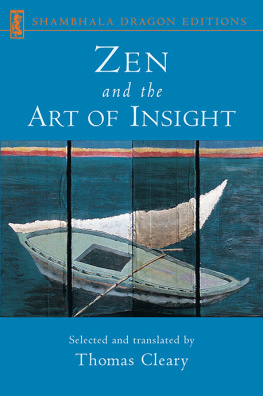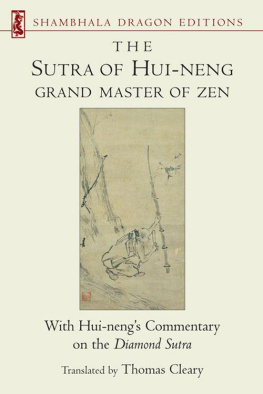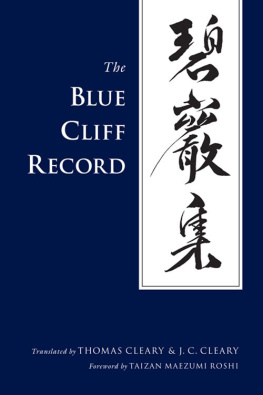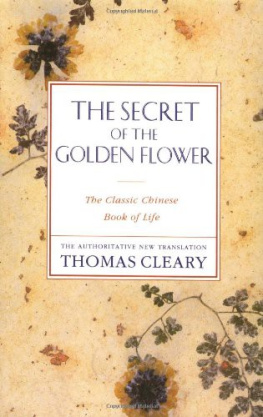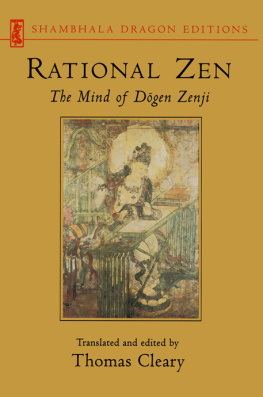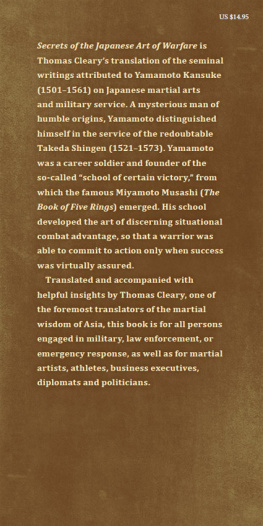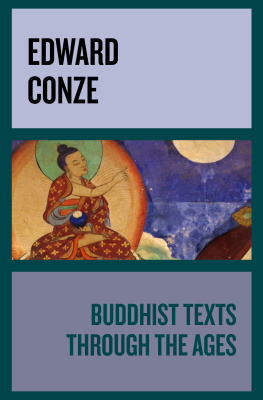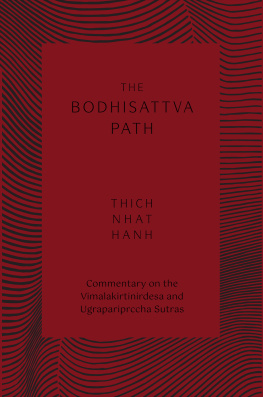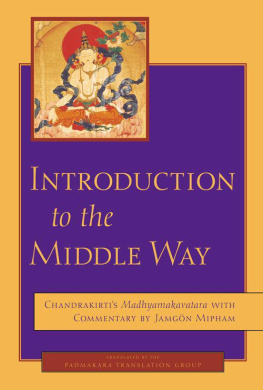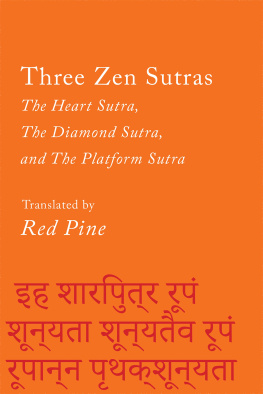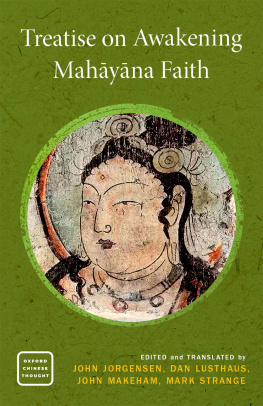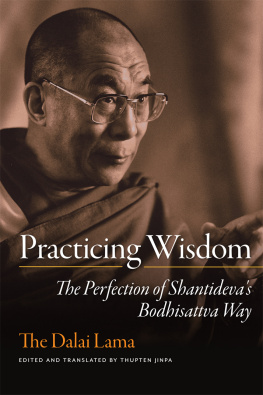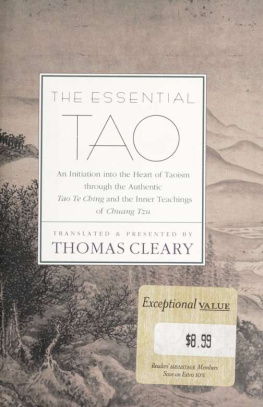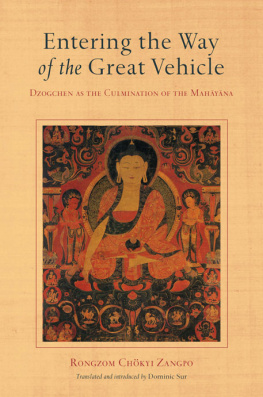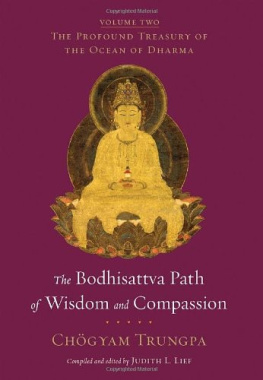ABOUT THE BOOK
The Prajnaparamita (perfection of wisdom) sutras are one of the great legacies of Mahayana Buddhism, giving eloquent expression to some of that schools central concerns: the perception of shunyata, the essential emptiness of all phenomena; and the ideal of the bodhisattva, one who postpones his or her own enlightenment in order to work for the salvation of all beings.
The Prajnaparamita literature consists of a number of texts composed in Buddhist India between 100 BCE and 100 CE. Originally written in Sanskrit, but surviving today mostly in their Chinese versions, the texts are concerned with the experience of profound insight that cannot be conveyed by concepts or in intellectual terms. The material remains important today in Mahayana Buddhism and Zen.
Key selections from the Prajnaparamita literature are presented here, along with Thomas Clearys illuminating commentary, as a means of demonstrating the intrinsic limitations of discursive thought, and of pointing to the profound wisdom that lies beyond it.
Included are selections from:
- The Scripture on Perfect Insight Awakening to Essence
- The Essentials of the Great Scripture on Perfect Insight
- Treatise on the Great Scripture on Perfect Insight
- The Scripture on Perfect Insight for Benevolent Rulers
- Key Teachings on the Great Scripture of Perfect Insight
- The Questions of Suvikrantavikramin
THOMAS CLEARY holds a PhD in East Asian Languages and Civilizations from Harvard University and a JD from the University of California, Berkeley, Boalt Hall School of Law. He is the translator of over fifty volumes of Buddhist, Taoist, Confucian, and Islamic texts from Sanskrit, Chinese, Japanese, Pali, and Arabic.
Sign up to receive weekly Zen teachings from Shambhala Publications.

Or visit us online to sign up at shambhala.com/ezenquotes.
Zen
and the
Art of Insight

Selected and translated by
THOMAS CLEARY

SHAMBHALA
Boston & London
2015
Shambhala Publications, Inc.
Horticultural Hall
300 Massachusetts Avenue
Boston, MA 02115
www.shambhala.com
1999 by Thomas Cleary
Cover art: Absorption/Insight (Side 2) by Shakti Maira
All rights reserved. No part of this book may be reproduced in any form or by any means, electronic or mechanical, including photocopying, recording, or by any information storage and retrieval system, without permission in writing from the publisher.
Library of Congress Cataloging-in-Publication Data
Tripiaka. Strapiaka. Prajpramit. English. Selections.
Zen and the art of insight/selected and translated by Thomas Cleary.
p. cm.
eISBN 978-0-83482-720-2
ISBN 978-1-57062-516-9 (pbk.)
I. Cleary, Thomas F., 1949 . II. Title.
BQ1882.E5C55 1999 99-34711
294.385dc21 CIP
Contents

This book contains diacritics and special characters. If you encounter difficulty displaying these characters, please set your e-reader device to publisher defaults (if available) or to an alternate font.

How do you know?
What does this mean... to you? Does it mean How do you know? or How do you know? Or does it mean How do you know?
Ordinarily this is just a rhetorical question, used as a retort. The implications, however, are deeper than customary clich. One of the great Taoist Zen masters wrote, Ordinary expressions and common sayings accord with the path of sages; you should turn to them for careful research. From this point of view, How do you know? opens the door to a world of wonderment. Are there reliable sources of knowledge? Of what can we be sure? How can we know this? Does mentality materially affect matters of knowledge? Is there a way from opinion to knowledge? What kinds of knowledge are available to us? How does what we think we know influence our everyday lives?
If we take the time to ask ourselves How do you know?as a retort, as a question, as a challengewe may get at the pivot of our relationships with our own thoughts and feelings, with our fellow human beings, and with the world at large. Taken for what it can yield in these roles, the question contains within it a challenge to the root of all ignorance and complacency.
The question of how we know what we know and how we know we know it can be one of the most threatening that can be posed, because it forces us to examine our most basic assumptions about ourselves, our world, and our being in the world. Yet it can also prove one of the most intriguing and important questions, for it is a first step into the wider reality beyond the pale of hidden bias and unconscious assumption.
How do we know if our perceptions and beliefs are valid? If we use our own knowledge to check our own knowledge, how can we know we are not revolving in circles? If we use others knowledge to check our knowledge, whose knowledge do we use, how do we know it is knowledge, and how can we know if or how others know when we ourselves do not know if we know what we know?
If we pursue these thoughts too far, we can quickly paralyze ourselves and lose our sense of meaning; yet if we do not ask ourselves these questions, we cannot know what we may be missing, or misconstruing, on account of unconscious assumptions.
One of the difficulties of approaching within our Western context this issue of how we know is that we have learned to disarm the question existentially by giving it terms like epistemology and pursuing it intellectually.
That habit is not peculiar to the West, as Eastern writings show, and it is not an insurmountable barrier to experiential insight as long as there lingers no subconscious assumption that the familiar conceptual or intellectual approach is the only way of understanding or knowing things.
When we view religion in terms of belief and worship, the issue of knowledge is not in question. In dogmatic religion, knowledge is identified with the dogma, and the question of its validity cannot arise without creating a sense of violation or threat to the religion.
To avoid the question, the dogma may be called divine revelation or sacred tradition, but it might be that any rationalization for nonexamination of beliefs will tend to satisfy the unconscious desire to remain at the level of belief and worship.
While this may comfort the bewildered within certain limits, the desire for this comfort may also be exploited to manipulate people, even so far as to turn them against one another in the name of their beliefs and actually divert them from their own best interests in the name of salvation.
For us in the West, who have been exposed to some of the worst religious persecutions in the history of the world, and even today hear of violence for and against religion all around the globe, it may be emotionally and intellectually difficult even to conceive of religion that is not based on dogma, belief, or worship. Yet that is precisely what we find within Buddhism, which aims for direct perception of truth and reality, not defense of doctrine or destruction of dissenters.
There is no doubt that Buddhist teachings have, like other religions, employed various edifices of faith and precept from time to time for the protection and maturation of spiritually immature individuals and communities. It is also beyond doubt that such edifices have been diverted, at various stages of their history, to purposes other than those for which they were originally devised. This is historically true of all institutionalized religions, including Buddhism, as is recorded in the writings of their own sages.
Next page
